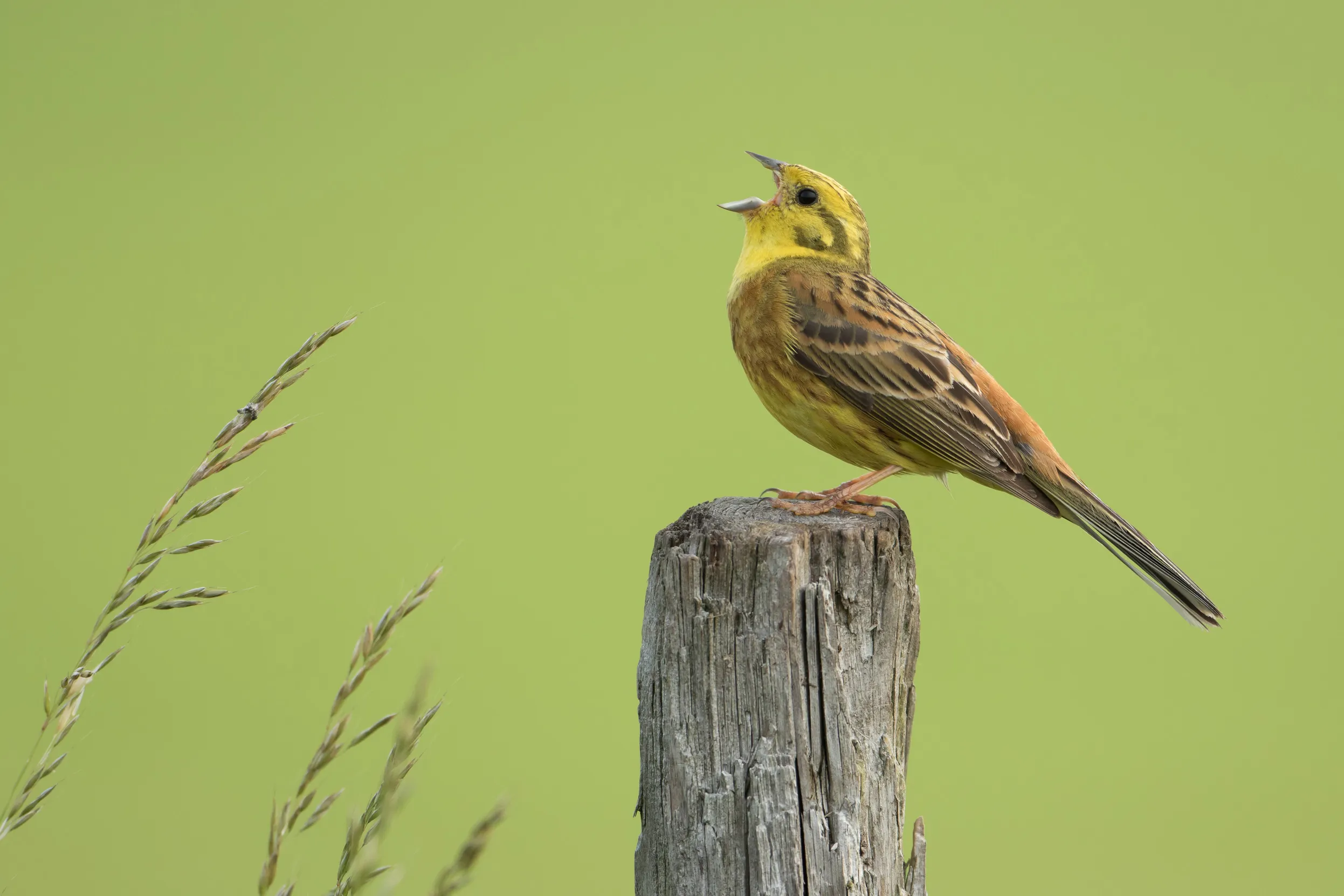News
A wild guide to wooing
This Valentine’s Day, we reveal some of the weird and wonderful ways birds find a partner.
More than 70% of the UK is farmed in some way. As well as providing us with food, it’s also home to some really special wildlife – from calling Cuckoos and Curlews to snuffling Hedgehogs and buzzing bumblebees. Much of this wildlife is really struggling and if we’re going to see it recover, we need to work with farmers.

At Groundswell regenerative farming festival last month (26-27 June), we joined 8,000 passionate, committed and innovative farmers, scientists, conservationists and citizens who share a belief in farming more in harmony with nature. We were there to listen, discuss, celebrate and champion the brilliant work being done to show you can have a productive farm business and make space for a rich variety of wildlife.
Regenerative Agriculture is a way of farming that over time improves the soil. It uses techniques such as limiting soil disturbance, maintaining soil cover and mixing livestock and arable farming. Many regenerative farming techniques may also be good for our wildlife and it’s these which the RSPB is exploring as part of the switch to more nature-friendly farming methods.

To grow food, we need nature. Healthy soils, clean water, a rich diversity of life – nature gives us the very things on which food production depends. Pollination is probably the most obvious example – 75% of all major food crops globally rely on pollinators. Think tomatoes, strawberries, apples, peas and courgettes. In just the UK, pollinators alone are worth £603 million a year to farmers. But when we make space for nature in our farmland, we also increase the birds and insects which can help with pest control, reducing the need for pesticides. We increase the insects recycling organic matter into nutrients and the microorganisms in our soil nourishing our crops, meaning less fertilisers.
By farming in this way and giving our wildlife a chance it can help our medium and long-term food security. But it can also reduce carbon emissions and help protect against extreme weather caused by climate change, such as flooding and wildfires.

If we saw a big shift towards more nature-friendly farming around the UK, it would be a much- needed boost for our wildlife. The 2022 Farmland Bird index shows us that the abundance of 19 key bird species has fallen dramatically since the 1970s, tumbling on average by 60%. For some farmland specialists, like the Corn Bunting, Grey Partridge, Starling, Turtle Dove and Tree Sparrow, things have been even worse, falling between 85% and 90%. The 2023 State of Nature report said that in Great Britain pollinators such as bees, hoverflies and moths, have decreased by 18% on average, while predatory insects, like the Two-spot Ladybird which help control crop pests, have declined by more than a third (34%). It also says more than a quarter of mammals could become extinct in Great Britain, with farmland often a key habitat for many of these species.

At Groundswell we chatted to and listened to many farmers and landowners who are showing this isn’t an either-or choice, it is possible to farm productively and profitably while bringing nature back. They’re choosing ways to farm which work for them, their business and help produce healthy food for all of us. The RSPB are also taking part in that journey, farming land in different landscapes around the UK. Since 2000, Hope Farm in Cambridgeshire has experimented with different ways of arable farming to increase the wildlife on the farm, while still growing food and turning over a profit.
Good practice such as reducing how many times we cut our hedgerows, providing insect-rich flower habitats, and seed-rich habitats have helped to provide food and shelter for wildlife around our fields. We also use no insecticides and have reduced pesticide and inorganic fertiliser use. The results speak for themselves. Breeding farmland birds like the Linnet, Yellowhammer, Reed Bunting and Skylark have at least tripled in number. Lapwings, Grey Partridges, Corn Buntings, and Yellow Wagtails have all returned as breeding species. Over-wintering birds have also increased by a whopping 1326%. The abundance and diversity of butterflies has also increased.

We’re already seeing amazing people farm in ways that work for them, their businesses and which help tackle the nature and climate emergency. But if we’re going to see nature recover, nature-friendly farming needs to happen on a much larger scale. If 10% of farmed land provided high-quality habitats for wildlife, it would transform our farmland into a place bursting with wildlife.
But to do this our farmers need support. Many people in agriculture are already facing a huge number of challenges, such as increased costs and increasing unpredictable weather. We’re calling on the UK Government to increase support for farmers to work with nature, so they can help create a healthier environment, and a world where our precious farmland wildlife can recover and then thrive.

You can help put the pressure on governments to do more to support nature-friendly farming by joining us as a campaigner, we’d love to have you on board! Join us and help us speak up and shout out for a brighter, thriving future for the wildlife you love.
Sign me up!
Another way is by supporting Fair to Nature, the UK’s only certification scheme with a focus on biodiversity. Find out about products which are produced in a way which helps restore the balance of nature in farming.
Tell me more
We’re at other shows – come and say hello!
Our farming teams will be at the Go Falkland show near Fife, from 17-18 July and the Royal Welsh Show, Builth Wells, from 22-25 July. You can find more details here.